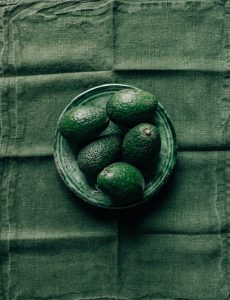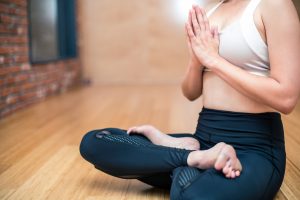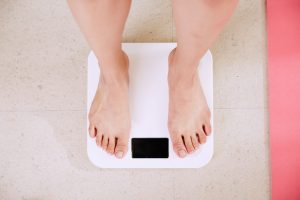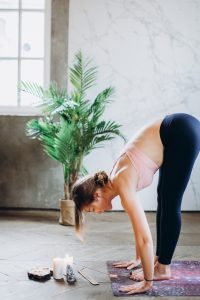Reasons You Should Log Your Workouts
You don’t have to take a lot of time to log your workouts, but you should do it. There are a lot of reasons for doing it and a lot of ways to do it. You can keep it simple, by creating a workout schedule that includes the exercises you do each day, the number of repetitions and number of sets of each. Just duplicate that for each week and adjusting the number of reps and sets as your fitness level improves. You can also make it more informative by including measurements and weight once a week and how hard or easy the workout was, so you know when to ramp it up and make the workout harder.
You’ll save time when you have a workout log.
Have you ever started to exercise and had to stop and think about what to do next or finished and realized you forgot an exercise? It happens to everyone at some time. Even if you’ve done a workout for a long time, it can happen. However, we don’t recommend doing any workout for longer than six weeks without changing it. Having that log can remind you what to do next and how many of each exercise to do.
You can track your progress easier and ensure you make progress.
Even if you start simple, such as doing a set of ten exercises and three sets of each, you may not progress at the same rate for each type of exercise. You might find some are easier for you to do because that particular muscle group started out more toned. Increasing the difficulty by increasing the number of reps and sets becomes more difficult the more accurate you are at challenging yourself. Logging your workout helps you even on those mornings you’re not quite awake.
Keeping extra notes can help you look for alternate ways to address an issue. If a regular push-up is continuously too hard, opt for an easier version, like a knee bent push-up until you’re strong enough for traditional ones.
Saving those logs and periodically looking back at where you started can be a big boost no matter what your goal. If you are disappointed in your ability to do a workout or shed a pound, seeing the progress can keep you motivated.
If you switch your workouts periodically, as you should, keeping old logs can give you a go-to plan months later. You can use some or all the workout but adjust the reps and sets upward.
At Habitat Health and Fitness, we track clients for a number of reasons. One of those is to ensure the workout is giving the best results. If you’re not seeing the changes you want, it’s time to take it up a notch or switch out some of the exercises.
Stay Active While Sheltering In Place
 During these uncertain times, staying at home can often be the safest option in Winter Haven or Lakeland, FL. Even if you stay at home and don’t come to Habitat Health and Fitness, you need to stay active while sheltering in place. Whether you’re staying at home as a precaution to protect you from a virus or staying home because of weather, keeping active keeps you healthy and prevents loss of the progress you’ve made on the road to fitness. You don’t need any equipment at home, just the determination to continue on your fitness regimen.
During these uncertain times, staying at home can often be the safest option in Winter Haven or Lakeland, FL. Even if you stay at home and don’t come to Habitat Health and Fitness, you need to stay active while sheltering in place. Whether you’re staying at home as a precaution to protect you from a virus or staying home because of weather, keeping active keeps you healthy and prevents loss of the progress you’ve made on the road to fitness. You don’t need any equipment at home, just the determination to continue on your fitness regimen.
Use the bodyweight exercises you’ve learned at Habitat Health and fitness to stay fit.
You don’t have to do anything fancy to stay fit, just make sure you get approximately a half hour to forty-five minutes a day of exercise. Some of the best exercises are those that have been around for a long time, such as bodyweight workouts. Do a combination of exercises that include flexibility, endurance and strength training. Push-ups, pull-ups, planks, lunges and squats are a few that can be combined to create a circuit training workout.
Turn any type of workout into circuit training or HIIT—high intensity interval training.
You can make it a cardio workout by making it circuit training and shortening the time between exercises or create a HIIT workout by varying the speed of the workout. Just walking around the house or going up and down stairs can be a HIIT workout. You workout at your top intensity for a few minutes to get your heart rate at 70 to 89% of maximum rate and then workout at a recovery rate of 60 to 65% for an equal or slightly longer period. It has many healthy benefits and can get you in shape more quickly than a steady state workout.
Sheltering in place doesn’t mean you can’t go outside.
Unless the winds of a hurricane are blowing and it’s raining cats and dogs, or the temperature is soaring, you can still go outside and enjoy the vitamin D boosting sun while you workout. You can also use the time to improve your home and get exercise at the same time. Painting a house, washing windows, doing yardwork and even working inside, such as vigorously cleaning the home can substitute for some of the exercises you do. Turn on music and dance your way to a cleaner, more organized home and better body.
- If you’re stuck at home, it’s time to experiment with a healthier eating plan. Create weekly menus, shopping lists and cook while you’re at home, freezing meals for the week or month.
- Make homemade gym equipment. Soup cans and water bottles filled to the weight you desire are great barbells. A broomstick can be a barbell with a backpack on each end as weights. A laundry detergent bottle with a handle filled with sand to the appropriate weight substitutes for kettlebells.
- If you have children, they can help you get and stay healthy Create a family workout time or active play time and stay fit together. You’ll create memories, encourage fitness and have fun together.
- Create a workout schedule and stick with it. Don’t just put your workout on the schedule, put all daily activities on it. You’ll be less apt to spend time eating snacks in front of the TV, stay fitter and get more done.
For more information, contact us at Habitat Health & Fitness
Foods That Are Good For Your Heart
 When you come to Habitat Health and Fitness in Lakeland, FL, you’ll notice we focus primarily on exercise, but that doesn’t mean we don’t encourage people to eat healthy. That’s especially true if you have a condition, such as diabetes or heart disease, which responds well to healthy eating. Many of the healthy foods are also foods that are good for your heart. They’re whole foods that contain heart healthy nutrients, such as Omega3 fatty acids, magnesium, vitamin D, folic acid, CoQ10 and potassium. You don’t have to have a heart condition to benefit from eating these foods, they provide other benefits, particularly for those who want to lose weight.
When you come to Habitat Health and Fitness in Lakeland, FL, you’ll notice we focus primarily on exercise, but that doesn’t mean we don’t encourage people to eat healthy. That’s especially true if you have a condition, such as diabetes or heart disease, which responds well to healthy eating. Many of the healthy foods are also foods that are good for your heart. They’re whole foods that contain heart healthy nutrients, such as Omega3 fatty acids, magnesium, vitamin D, folic acid, CoQ10 and potassium. You don’t have to have a heart condition to benefit from eating these foods, they provide other benefits, particularly for those who want to lose weight.
The American diet is too high in Omega 6 fatty acids.
The body can make all types of fatty acids but two, these are essential fatty acids and derived from foods that contain Omega 3 and Omega 6 fatty acids. The ideal ratio of Omega 3 and Omega 6 fatty acids is one part Omega 3 to four parts Omega 6. The average American diet today is one part Omega-3 to twenty-five parts Omega-6. That’s bad for heart health and can also increase agitation and other problems. One study in a violent prison, showed that by increasing the amount of Omega-3 and reducing the amount of Omega-6 it cut the amount of violence in half. Sources of Omega 3 are fatty fish such as salmon, herring or flaxseeds and other seeds and nuts. They can provide heart healthy nutrition and other benefits.
Sunshine is healthy.
You might worry about getting too much sun and that’s a possibility if you don’t sun safely. However, the right amount of exposure to the sun is important. It helps the body create vitamin D. Vitamin D helps regulate blood pressure and provides other healthy benefits. Smart sunning may not be an option, especially on overcast days. Luckily, many foods are high in vitamin D. Egg yolks, cheese, beef liver and products fortified with vitamin D can help you get the required daily amount you need.
Are you getting enough magnesium?
If you have high blood pressure, maybe you lack magnesium. A lack of magnesium not only causes blood pressure to rise, it causes muscle cramps—which includes the heart muscle, osteoporosis, mental disorders, irregular heartbeat and asthma. What should you eat? Avocados, raw spinach, soybeans and a favorite, dark chocolate all contain magnesium.
- Eat Brussels sprouts, lentils, broccoli and asparagus to get heart healthy folic acid. It lowers homocysteine levels in the blood and reduces the risk of heart disease and stroke by 20%
- Are you getting adequate fiber? Fiber not only helps you lower bad cholesterol, it also helps you lose weight, which also reduces the risk of heart disease.
- Organ meats like liver are high in CoQ10. Low levels of CoQ10 are linked to high blood pressure and heart failure.
- The more colorful the food on your plate, which means including all colors of vegetables, the healthier your heart, since different colored vegetables contain different phytonutrients. Don’t forget about a program of regular exercise to boost your heart health either.
For more information, contact us today at Habitat Health and Fitness
Fitness Helps With Anxiety
 If you find you fret frequently or simply feel something bad is about to happen, maybe you need to start working out. You’ll be amazed at how much better you feel after a tough workout. People often tell me that even though they started working out for their heart health, weight loss or other physical benefit, they found that exercise also provided mental benefits. It’s true, fitness helps with anxiety and can help you live a fuller life without the nagging unfounded doubts and worries.
If you find you fret frequently or simply feel something bad is about to happen, maybe you need to start working out. You’ll be amazed at how much better you feel after a tough workout. People often tell me that even though they started working out for their heart health, weight loss or other physical benefit, they found that exercise also provided mental benefits. It’s true, fitness helps with anxiety and can help you live a fuller life without the nagging unfounded doubts and worries.
Once you understand anxiety, you’ll know why exercise works.
Primitive man had dangers all around him. Wild animals, invading groups of humans and even fires caused by lightening were a problem. To help survive, when the brain senses danger, it signals the body to prepare by sending hormones that make changes to run or fight. It slows the blood to the organs that aren’t useful for running or fighting, sends more to the extremities necessary to do so, increases heart rate, raises blood pressure and dilates the pupils. That may prepare you for fighting, but it can leave a sick feeling in the pit of your stomach. It also leaves you with a feeling of impending doom. Our brain doesn’t differentiate between real danger and stress, so these same symptoms often appear from everyday interaction. Those changes to the body also describe an anxiety attack.
Dangers don’t have to be real to make the changes.
Have you ever been so engrossed in an action or horror movie that you felt your heart pounding? You weren’t running from the zombie, but your brain decided you were. Sometimes, just a memory of something that was traumatic and dangerous can set off an anxiety attack or feeling of anxiousness. It doesn’t even have to be something that actually happened, but something you worried might. The brain doesn’t really care, it simply does what it’s supposed to do in time of danger and sends out hormones to make the changes in the body.
You have to burn off the hormones of stress to get your body back to normal.
Exercise simulates the movements you make if you’re running or fighting. Those movements and the increased circulation burns off the stress hormones and replaces them with ones that make you feel at ease. The reason people pace is often because it feels good in times of stress, so take a cue from them. If you can’t workout at a gym when you’re under stress, try taking the stairs for a few laps. Run up and down the stairs until you feel better. You’ll be amazed at how well it works.
- Take a walk, make it brisk. In times of trouble or frustration, sometimes just getting out and moving until you’re breathing harder can put things back into prospective and make you feel calmer.
- It’s getting more and more common for therapists to add exercise as a complementary treatment for depression and anxiety. One thing is certain, it won’t hurt you if you’re otherwise healthy. Always consult your health care professional first before starting any program of exercise.
- Meditation, focused breathing and other mentally quieting techniques are also useful. Exercise isn’t always an option when there’s abundant stress. These techniques can help, too.
- You’ll take your mind off your problem when you’re working out hard and focus more on the workout. It allows you to retreat and then return with a whole new attitude and more alert mind.
For more information, contact us today at Habitat Health and Fitness
Is Yoga Good For Anxiety?
 There are a great deal of studies that show exercise is good for anxiety. It helps burn off the hormones of stress, reduces fatigue, improves concentration and reduces anxiety. Exercise stimulates the production of endorphins that make you feel good. It helps you sleep, which can reduce anxiety and depression. Exercise stabilizes your mood, and just five minutes of aerobic exercise can provide anti-anxiety benefits. One study shows that yoga could be a beneficial supplementary treatment for anxiety.
There are a great deal of studies that show exercise is good for anxiety. It helps burn off the hormones of stress, reduces fatigue, improves concentration and reduces anxiety. Exercise stimulates the production of endorphins that make you feel good. It helps you sleep, which can reduce anxiety and depression. Exercise stabilizes your mood, and just five minutes of aerobic exercise can provide anti-anxiety benefits. One study shows that yoga could be a beneficial supplementary treatment for anxiety.
Studies on anxiety and depression found that yoga and other types of meditative practices can help reduce stress.
Studies on meditation and yoga for both depression and anxiety started back in the 1970s. While meditation was the preferred technique in the 70s, yoga has become more popular. Yoga uses physical poses that work the muscles, just as other types of exercise, breathing practice that helps calm and meditation. All three things can reduce stress and bring more relaxation to the body.
Sometimes the reaction to stress becomes a habit and exaggerates the more it occurs.
Chronic anxiety comes with an exaggerated stress response. Yoga can bring relief through techniques that offer self-soothing. The meditation, relaxation, expenditure of energy and even sometimes, getting together with friends can shut off the switch that increases anxiety and stress. It helps reduce perceived danger and change the mind by aiding in lowering blood pressure, heart rate and rate of respiration.
Studies show that yoga can also increase pain thresholds and increase pain tolerance.
The study used MRIs to show the area of the brain that showed a response to pain. There was more activity in people that didn’t use yoga. It showed those who practiced yoga had a higher pain tolerance. The study showed that those who practiced yoga had lower pain responses. People with hypersensitivity to pain also had higher anxiety and those with lower pain response suffered from less anxiety.
- If you don’t have time for a full blown exercise session, just a quick ten minute walk can be of benefit. It may be the reason that people pace when they’re nervous. If you’re depressed, try walking briskly for a few minutes.
- When you do yoga, you learn to relax the body. That learned technique can be important when anxiety and stress sets in and takes over thoughts. It trains you to relax.
- Yoga, like any type of exercise, can help make you strong and improve your posture. Both changes can give you more self-confidence. Building self-confidence can also help overcome anxiety.
- Whether discussing yoga or any form of exercise, there is a connection between mind and body. When you exercise, you build energy and strength, but you also make changes in the brain. It helps improve clarity of thought and boosts cognitive thinking, as well as benefiting your overall mood.
For more information, contact us today at Habitat Health & Fitness
Best Workouts To Build Muscle
 Our clients love to workout at Habitat Health and Fitness in Lakeland, Florida, because we offer workouts to build muscle, burn calories and build all types of fitness, endurance, strength, flexibility and balance. We focus on building muscle tissue, since the more you have, the easier it is to lose weight. We also focus on workouts that are so effective, you don’t have to workout as long and still get the benefits of building muscle tissue. Here are a few of my favorite muscle building exercises.
Our clients love to workout at Habitat Health and Fitness in Lakeland, Florida, because we offer workouts to build muscle, burn calories and build all types of fitness, endurance, strength, flexibility and balance. We focus on building muscle tissue, since the more you have, the easier it is to lose weight. We also focus on workouts that are so effective, you don’t have to workout as long and still get the benefits of building muscle tissue. Here are a few of my favorite muscle building exercises.
Go to compound exercises to get the most benefit.
Compound exercises work several muscles, joints and tendons at once. They not only build strength, they build coordination and size. You work multiple muscle groups, so you get the benefit of burning more calories. They mimic everyday movements more and can help prevent injuries by providing more functional fitness. The bench press, dip, barbell squat, bench step-up with weights, pull-ups and military press are a few examples.
You can use just four exercises to get results.
Sometimes, squats, deadlift, shoulder press and bench press are called the big four of strength training. Learn to do them correctly and do them often. You can add barbell workouts to that and don’t have to get fancy with expensive machines. In order to build strength, you need to continue to increase the amount of weight you’re lifting. Barbells are an easy way to do that. These should be core exercises to be added to for variety.
Use bodyweight exercises to help build strength.
Bodyweight exercises are particularly good if you’re working out at home. They require either no equipment or minimal equipment, so you can do them almost anywhere. Squats are good for lower body strength and core muscles. They offer some help for the upper body as well. Push-ups build upper arm strength, shoulders, abdominals, chest, and the muscles in the armpits called serratus anterior. Plank exercises provide total body strength.
- Battle ropes also help build muscle tissue and can actually be harder to do than traditional weight lifting. The ropes create a variety of angles of tension and make your body work on all planes.
- Climbing stairs can build strength in the legs, just as walking hills does. You can use stair step exercises in the gym to build your muscle strength. Also making sure you take the stairs rather than the elevator as often as possible is good.
- Don’t forget that building muscle means taking a day between workouts to rest. Your body needs time to mend the microtears in the muscles to make them stronger.
- We use a variety of training techniques to ensure every muscle gets attention on all planes so you get strong muscles that keep you free from injury.
For more information, contact us today at Habitat Health & Fitness
Why Are Grains Unhealthy??
 Are grains unhealthy? The answer is not as simple as it seems. There are all types of grains and a variety of methods to process them. Not all grains are created equally. Whole grains are not the same as refined grains when it comes to nutrition. Whole grains contain all the nutrients of the bran, germ and endosperm. The bran is the outer layer of the grain that has minerals, antioxidants and fiber. The germ has the most nutrition with protein, fats, phytonutrients and antioxidants. The endosperm, which is the biggest bulk of the grain, is just starchy carbs and a tiny amount of protein. Refined grains only contain the endosperm and none of the nutritious content of the bran and germ.
Are grains unhealthy? The answer is not as simple as it seems. There are all types of grains and a variety of methods to process them. Not all grains are created equally. Whole grains are not the same as refined grains when it comes to nutrition. Whole grains contain all the nutrients of the bran, germ and endosperm. The bran is the outer layer of the grain that has minerals, antioxidants and fiber. The germ has the most nutrition with protein, fats, phytonutrients and antioxidants. The endosperm, which is the biggest bulk of the grain, is just starchy carbs and a tiny amount of protein. Refined grains only contain the endosperm and none of the nutritious content of the bran and germ.
Grains can be difficult to digest because of the complex protein they contain.
While whole grains are more nutritious than processed grains, they also can contain gluten. You’ve probably heard of gluten and gluten intolerance. Gluten is a combination of two proteins that makes it difficult for the body to digest and causes inflammation, with potential damage to the intestines and trigger an autoimmune response. Gluten is in both whole grains and processed grains. Due to agricultural changes to increase production, gluten has increased in grains in the last few decades.
Grains can affect your body’s digestion.
In order to digest food, the brain sends enzymes, which are the body’s messenger or catalysts that start that process. Without those enzymes, digestion simply won’t occur. Grains are seeds. Mother Nature has a beautiful plan. Built into each seed are enzyme inhibitors that prevent plants from sprouting until all conditions are right. For instance, seeds are transported by birds and pass through their system to be planted when they defecate. Sprouting inside the bird would be the death of the potential plant. While the enzyme inhibitors are good for the seed, they’re bad for your system and can impede digestion.
Grains contain phytic acid.
Phytic acid occurs naturally in seeds and grains are seeds. It affects the absorption of zinc, iron and calcium in the body and is often considered an anti-nutrient, since it can cause deficiencies. Consider the effects of lowered intake of calcium, iron, zinc, magnesium and even reduce the production of digestive enzymes that help break down protein, such as pepsin, amylase and trypsin. While whole grains may have higher levels of nutrients than processed grains, it also has higher levels of phytic acid.
- Processing methods can lower the amount of phytic acid in seeds and grains and make them easier to digest.. Soaking, fermenting and sprouting can help reduce the amount of phytic acid in grains. Sour dough bread is an example of fermenting.
- The more gluten the grain contains, the harder it is to digest. Wheat and all the forms of wheat like spelt, farina, wheat berries and graham are at the top of the list, followed by rye, barley, triticale, malt and brewer’s yeast.
- If you think that you have problems digesting grains, try an elimination diet. Elimination diets are the gold standard for finding allergies, food sensitivities and food intolerances.
- Avoiding grains can help with weight loss, lower inflammation, improve your microbiome, improve your cholesterol and improve nutritional uptake. However, they’re a good source of fiber and many nutrients.
For more information, contact us today at Habitat Health & Fitness
How To Beat A Weight Loss Plateau
 If you’ve ever reached a point that seemed no matter what you did, your weight wouldn’t budge, you’ve reached a plateau. That’s one of the most common problems people face when they’re trying to lose weight and often a reason people come to Habitat for Health and Fitness in Lakeland, FL. Not every plateau is the same. In some cases, you may not be losing weight, but are making progress. You may be replacing fat tissue with muscle tissue. Muscle tissue is denser and weighs more per cubic inch than fat tissue does, so you’re actually losing inches and look thinner, which is the ultimate goal of weight loss.
If you’ve ever reached a point that seemed no matter what you did, your weight wouldn’t budge, you’ve reached a plateau. That’s one of the most common problems people face when they’re trying to lose weight and often a reason people come to Habitat for Health and Fitness in Lakeland, FL. Not every plateau is the same. In some cases, you may not be losing weight, but are making progress. You may be replacing fat tissue with muscle tissue. Muscle tissue is denser and weighs more per cubic inch than fat tissue does, so you’re actually losing inches and look thinner, which is the ultimate goal of weight loss.
Are you doing the same old routine?
Plateauing can occur if you don’t change your routine. The more you do an exercise, the more adept your body becomes at doing it. It’s muscle efficiency. While efficiency is normally a good thing, when it comes to exercise and burning calories, that’s not true. It can stall your weight loss progress. At best, you won’t be getting as much out of each workout and at worse, you’ll level off weight loss and plateau. Varying your workout routine periodically can help you keep continuous weight loss progress.
Are you including strength training in your workout.
Not only is muscle tissue denser than fat tissue, it also requires more calories for maintenance. That means the more muscle tissue you have, the more calories you’ll be burning 24/7. Strength training not only helps you burn calories, it helps burn fat, while building muscle tissue. Unlike aerobic training that burns both.
Maybe you’re not varying your caloric intake enough.
The more you weigh, the more calories you burn. It takes energy to carry the extra weight and as you start to shed those pounds, every time you move you’ll be burning fewer calories. Consider the number of calories burnt if you’re walking a mile carrying ten pound weights, compared to walking a mile not carrying the weight. Of course, you’ll burn fewer calories without the weights, the same is true for shedding weight. If you are eating the same number of calories and working out just as hard each day, as you get thinner, your weight loss will slow. Adjust your caloric intake as you shed weight.
- Maybe you’ve cut your calorie intake too low for too long. Consider a cheat day. Those are days when you eat a little more, but don’t over do it or do it too often. Cheat days can help keep your metabolism higher.
- Is your workout routine well rounded? If you’re constantly doing cardio, you may be burning muscle tissue, which can slow your progress. You need all types of exercise, strength, endurance, flexibility and balance.
- Are you getting adequate sleep. Lack of sleep can actually stimulate the production of ghrelin—the hunger hormone and diminish leptin—the hormone that makes you feel full.
- Are you drinking an adequate amount of water? Studies show that drinking water before a meal boosts weight loss. Water acts like a diuretic and flushes your system and helps fill you up, not out.
For more information, contact us today at Habitat Health & Fitness
Home Workouts That Can Be Done While The Kids Nap
 It’s not always easy for parents with small children to come to Habitat for Health and Fitness in Lakeland, Florida, every day or other day. That’s when home workouts, especially those short enough to be done during nap time, can be a huge benefit to fill in the gaps. Some workouts are only a few minutes of intense exercise and others last longer. Depending on how long nap time lasts, choose one that fits in your schedule. You’ll feel revitalized and ready to go when you get your workout in for the day.
It’s not always easy for parents with small children to come to Habitat for Health and Fitness in Lakeland, Florida, every day or other day. That’s when home workouts, especially those short enough to be done during nap time, can be a huge benefit to fill in the gaps. Some workouts are only a few minutes of intense exercise and others last longer. Depending on how long nap time lasts, choose one that fits in your schedule. You’ll feel revitalized and ready to go when you get your workout in for the day.
Get your heart pumping with some exercises you can combine into circuit training.
If you want a short workout that will burn off stress, get your heart pumping and provide those feel good hormones, try some cardio and make it into circuit training for maximum benefit. Do several exercises in a row as one circuit, one right after another. Try one minute of butt kicks, one minute of jump rope, a minute of mountain climbers, a minute of burpees and then rest for a minute. Do it four times for a great twenty minute workout that will make you sweat and help weight loss.
If you want a complete workout, get weights or resistance bands for your workout.
If you don’t have weights, you can use large soup cans or bottles filled with sand or water. Weight training not only burns calories, it builds muscle tissue. Muscle tissue requires more calories than fat tissue does for maintenance, so the more you have, the higher your metabolism. Start by warming up with a minute of jump rope. Do ten to twelve of each, bicep curls, pushups, tricep kickbacks, squats, dumbbell rows, lunges and end it with a minute plank. Repeat a second or third time.
Get your work done while you’re working out.
Do you need to multitask to get everything done? Try making clean-up a workout. Do squats while picking up toys and vacuum with vigor doing lunges along the way. There are always sticky finger prints on the windows or smears from kids and pets pressing their faces against the pane. Turn sideways and wash that window with the arm furthest away. Do it with vigor. Standing at the sin can be exercise when you combine it with calf raises. Do squats when folding laundry. There are all sorts of ways to make cleaning a vigorous workout.
- Make your stairs a substitute for a stepmaster. Run up that flight of stairs to check on the kids or take smaller laundry loads up to get in more stair time. If you need more exercise, just run up and down until you’re winded.
- Get out your earbuds and play some music and dance like there’s no tomorrow. Worried about not hearing noise from the kids? Turn the volume on low or check on the kids after each song.
- Why wait? Workout with the kids. Lifting the baby builds your endurance naturally as the baby gains weight. Rock them while you’re doing squats. Toddlers love to join in the fun, so get them involved.
- If you want to supplement your gym time, talk to your trainer at Habitat for Health and Fitness to get a personalized workout you can do at home that’s short and meets your goals.
For more information, contact us today at Habitat Health and Fitness
How Fitness Helps With Mental Health
 Lots of clients at Habitat Health and Fitness tell me how good they feel after a workout. They note that not only do they feel like they have more energy, they feel less stressed and happier. There’s a reason for that. Exercise helps burn off the negative stress hormones that affect your body throughout the day and keep you with the feeling of a knot in your stomach. But there are other ways fitness helps with mental health and studies that show the positive effect.
Lots of clients at Habitat Health and Fitness tell me how good they feel after a workout. They note that not only do they feel like they have more energy, they feel less stressed and happier. There’s a reason for that. Exercise helps burn off the negative stress hormones that affect your body throughout the day and keep you with the feeling of a knot in your stomach. But there are other ways fitness helps with mental health and studies that show the positive effect.
Exercise has become a complementary therapy for depression and anxiety.
Working out isn’t a replacement for help from mental health professionals, but it can supplement that help. Studies show that exercise can help relieve both depression and anxiety. Many health care professionals use it as an adjunct therapy and it helps for more reasons than just burning off stress hormones. In fact, for moderate anxiety or depression, one study shows that just moderate exercise several times a week can get good results, even eliminating the need for medication. The only side effect from this therapy is a great looking body and more energy.
The improved circulation from exercise helps all parts of your body, even your brain.
It doesn’t matter what study you choose, they all agree that exercise boosts circulation. That improved circulation transfers to better mental functioning. You’ll think clearer and increase your cognitive ability. Studies are now geared to see if exercise is a good way to offset age related mental decline. That hypothesis is based on the studies that show cardio workouts boost the creation of new brain cells, called neurogenesis. Neurogenesis improves the functioning of the brain by strengthening the hippocampus, aiding memory.
Let’s not forget the benefit of a good night’s sleep.
Lack of sleep leaves you tired, brain fuzzy and often really grouchy. Some times you’re more emotional and cry easier. When you workout regularly, not only do you sleep sounder, but it improves the quality of sleep. It makes it more likely that you’ll get the right type of sleep to boost your mental functioning. If you have insomnia, try working out regularly and see if that helps.
- Lack of confidence can make you feel inadequate, make you sound and feel confused. When you workout not only does it improve your posture to make you look more confidence, it actually improves your self-confidence.
- Have you ever waited in a room with people that were worried? There are always a few pacers. It’s a natural reaction to stress with the walking/exercise bringing comfort when you’re anxious.
- Working out increases your heart rate and stimulates the production of neurohormones. Those help regulate not only cognitive functioning, but improve your mood, too.
- Still not convinced? Come in and see for yourself. We offer 3 free fat burning sessions at Habitat Health and Fitness. Try them and see how great you feel emotionally when you’re done.
For more information, contact us today at Habitat Health and Fitness









